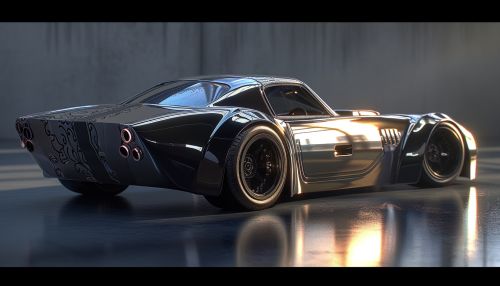3D rendering
Introduction
3D rendering is the process of converting three-dimensional (3D) models into two-dimensional (2D) images on a computer. This process is a crucial aspect of computer graphics, animation, and video game production, as well as in the design and visualization of architectural and engineering projects.


History
The history of 3D rendering dates back to the 1960s, with the development of Sketchpad, the first graphical user interface. However, it wasn't until the 1970s that the first 3D rendered images were created, using what is now known as wireframe models. The 1980s saw significant advancements in 3D rendering technology, with the introduction of raster graphics and the development of the RenderMan rendering software by Pixar Animation Studios.
Types of 3D Rendering
There are several types of 3D rendering, each with its own strengths and weaknesses. The most commonly used types include:
Scanline Rendering
Scanline rendering, also known as rasterization, is a method of rendering 3D objects into a 2D image. It works by processing each row (or scanline) of the image in turn, determining which parts of the 3D model are visible in each row, and then filling in the corresponding pixels on the screen.
Ray Tracing
Ray tracing is a technique that simulates the way light interacts with objects in the real world. It traces the path of light rays from the viewer's eye through each pixel on the screen and into the 3D scene, calculating the color of each pixel based on the light sources and objects the rays encounter.
Radiosity
Radiosity is a global illumination algorithm that simulates the way light is reflected off surfaces in the real world. It calculates the color of each surface based on the amount of light it receives from all other surfaces in the scene, resulting in more realistic shading and shadows.
3D Rendering Software
There are numerous 3D computer graphics software available for creating 3D models and rendering them into 2D images. Some of the most popular include Maya, Blender, and 3ds Max. These software packages offer a range of tools and features for modeling, texturing, lighting, and rendering 3D scenes.
3D Rendering Techniques
There are several techniques used in 3D rendering to achieve different visual effects. These include:
Texturing
Texturing is the process of applying 2D images (or textures) to the surfaces of 3D models to give them more detail and realism.
Lighting
Lighting is crucial in 3D rendering as it determines how the objects in the scene are illuminated, creating shadows and highlights that add depth and realism to the image.
Shading
Shading is the process of calculating the color of each pixel in the image based on the lighting and the material properties of the objects in the scene.
Applications of 3D Rendering
3D rendering has a wide range of applications in various fields, including:
Video Games
In video game development, 3D rendering is used to create the game's visuals, from the characters and environments to the special effects.
Animation
In computer animation, 3D rendering is used to generate the final frames of the animation, which are then compiled into a movie.
Architecture
In architectural visualization, 3D rendering is used to create realistic images of building designs, allowing architects and clients to visualize the finished project before construction begins.
Engineering
In engineering design, 3D rendering is used to visualize and test product designs, helping to identify potential issues before the manufacturing process begins.
